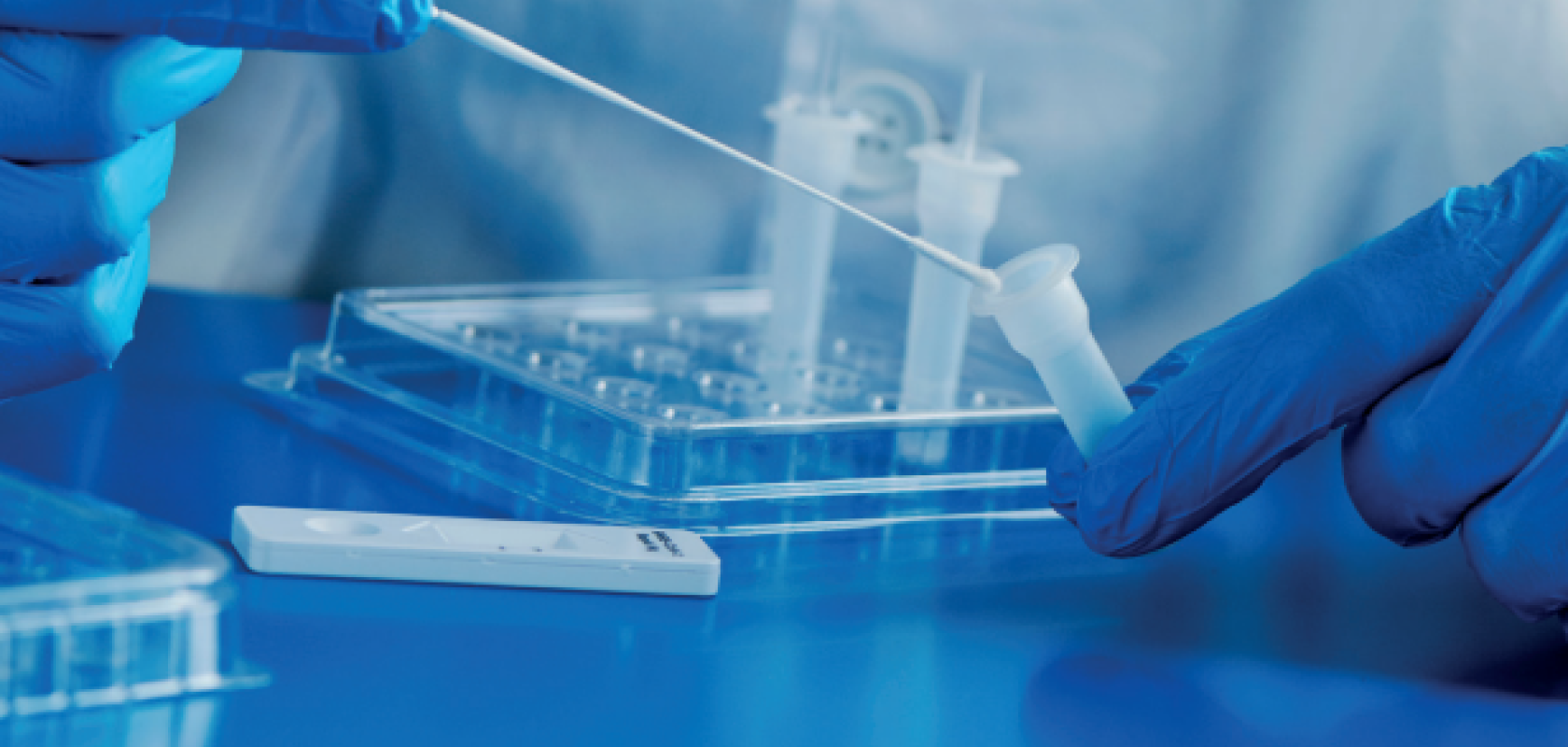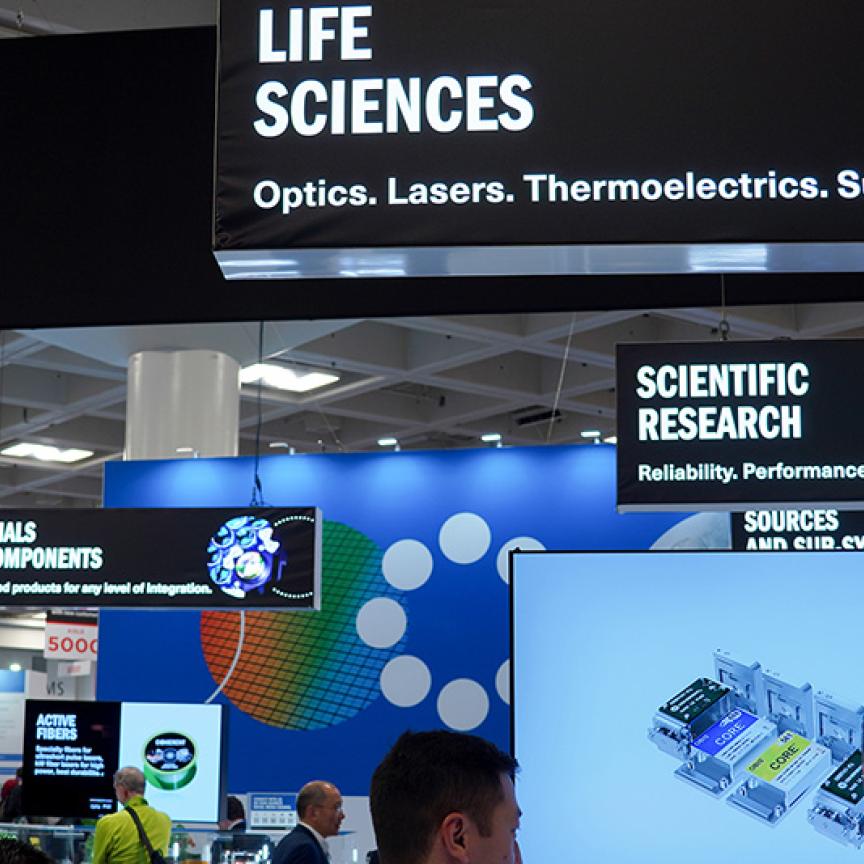The covid pandemic cemented the importance of delivering the right diagnosis at the right time. Optical sensing technologies such as spectroscopy have been crucial in making this possible, bringing diagnostics closer to the patient through rapid, cost effective testing devices. Point-of-care not only helps to improve patient outcomes, but supports more preventative approaches in healthcare.
But as the needs of medical device manufacturers evolve, photonics companies selling to this sector must meet additional demands for technical robustness and high reliability, as well as faster development times and manufacturing in volume.
High-volume testing requires robust devices
Spectroscopy has played a role in biomedical research for nearly 30 years, said Rob Morris, Knowledge Manager at Ocean Insight, and during this time has been readily adopted by the commercial sector serving these markets: “Biomedical diagnostic companies readily embraced using spectroscopy and optical sensing, particularly on the research side, along with companies that have more recently started to make devices that go into hospitals and clinics,” he said. “I think they certainly were aware of what optical sensing could do.”
As diagnostics move closer to the patient, the core technology must become robust and cost effective enough for integration into heavily-used instruments that withstand regulatory scrutiny.
One of the most important technical factors for such devices is the ability to produce reproducible results, which demands extremely high stability. “If you're working in a lab, you’re typically making a few measurements over the course of the day, so you can adjust for changes that might exist in the lab environment (if you're calibrating routinely),” explained Morris. “If you're at the point of care, you don't have that luxury – you're making measurements throughout the day. You need to be able to account for changes in those conditions. And in an environment like a hospital, for example, temperature change can be pretty dramatic.”
A spectrometer’s wavelength can drift over time and with changing temperatures. Even a drift of one or two wavelengths can drastically affect results in healthcare applications, Morris noted: “If you're trying to determine a specific peak within the spectra that correlates to a parameter related to someone's health at the time, that is pretty significant.”
This means refinements and enhancements need to be made within the spectrometer set-up to make the whole system more thermally stable and mitigate the effects of the environment itself.
Customised devices
Another factor that comes into play as optical sensing technology becomes more accessible and subsequently used in applications such as healthcare, is that the requirements of customers become ever more diverse, Morris noted, which demands that photonics companies get closer to the integration process. “There's a whole host of issues involving electronics and communications – for example, if the device will be wi-fi or Bluetooth enabled, and which kind of interface it will have. But every customer is a little bit different in what they need. It’s more involved than it would be for a customer that’s solely working in the lab,” he said.
Ocean Insight’s Ocean ST microspectrometer is an ideal option for medical diagnostics in a point-of-care setting, according to a recent White Paper (available on www.electrooptics.com/white-papers) that demonstrates its ability to measure absorbance of whole blood and haemoglobin.
The company has completed several experiments using similar set-ups to the method described in the White Paper to monitor a range of health parameters, with close to real-time results. For example, measuring the build-up of bilirubin, which can signify liver issues, or blood oxygen levels in anaemia patients.
“You can make these measurements continuously, which is much faster than a blood chemistry test, for example, which may require drawing blood and taking it to a lab, where reagents are added to make a measurement,” said Morris. “This set-up covers a wider range of components within the blood and gives you the advantage of being right there by the patient’s bedside.”
The need for speed
In addition to adapting to the changing technical requirements of medical diagnostics companies, photonics firms must meet the need for fast turnaround times and volume manufacture.
“If the pandemic taught us anything, it is that you need to be able to move quickly,” said Morris. “During the pandemic, [customers in the diagnostics sector] needed an assurance that suppliers could keep up with the tremendous demand that was occurring in real time – which had literal life and death consequences. And not only supply what was needed but be able to adapt as their technical needs evolved. Companies gravitated towards suppliers who could provide customised systems in the shortest amount of time, in volume.”
The miniature spectroscopy set-ups Ocean Insight provides, such as the ultraviolet-visible spectroscopy system described in the White Paper, can be customised on a mass scale over short time periods to meet these emerging needs, Morris noted. In addition to viral detection technologies, Ocean Insight experienced a huge demand for blood gas analysis systems during the pandemic, for monitoring the blood oxygen of patients on ventilators, and for systems that could measure other critical blood components.
Speeding up product development and supplying higher volumes leaves companies sensitive to supply issues, such as those created by the semiconductor shortage, which requires competence across a range of business matters – from inventory management to supplier communications. This is made all the easier when a company is already established, explained Morris: “We have developed these protocols over years of working with these types of customers. So we're set up, we're not starting from scratch, and that helps when you have to respond quickly. I think that certainly came into play during covid,” Morris said.
Deciding the direction of development
With so many possible parameters to measure within the human body, how do photonics companies determine the most appropriate direction of technology development within the point of care space?
Ocean Insight has a dedicated business segment that investigates the needs of different sectors, Morris highlighted. But what’s just as important is listening to the needs and challenges of its partners and customers, which it has developed over its 34-year history.
This is particularly the case when customers move from the research world to the commercial one, Morris pointed out: “When researchers leave academia and move to industry, they take some of those lessons they learned about spectroscopy and they apply it to the industries they are in. They could be working in the medical area, life sciences, pharmaceuticals – all these kinds of interrelated segments – but they are familiar with spectroscopy equipment from back when they were a researcher. And each of these customers, especially the ones that become high volume customers, and that have worked with us for many years, are helping us learn things that we can apply to other customers.”


